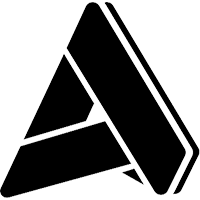Navigate the Equipment ERP RFP Process with Ease: Follow These 4 Steps
Navigate the Equipment ERP RFP Process with Ease: Follow These 4 Steps
Navigate the Equipment ERP RFP Process with Ease: Follow These 4 Steps
10 Aug 2023
Aptean Staff Writer
Whether you’re selling, renting out or servicing equipment, enterprise resource planning (ERP) solutions should come to mind when thinking about further streamlining and optimizing your operations. To remain competitive, you need to look for new ways of improving efficiency to better serve your customers and yield more profits.
Just like other C-level leaders in the industry, you understand that implementing a purpose-built ERP solution can take your business to the next level, but its a challenging proposition just to get started. Suppose you’ve decided to retire many of your organization’s cumbersome, siloed system processes or upgrade your legacy system. If that’s the case, you need to manage the request for proposal (RFP) process to successfully find the right equipment ERP—and software vendor—for your business.
An RFP is a document that helps you compare vendors objectively based on their capabilities. Drafting your first RFP can be intimidating. That’s why we’ve developed a free, comprehensive RFP template to help you assess various solutions based on your needs.
For some, shopping for equipment ERP software and choosing the perfect vendor could be stressful especially if you’re not familiar with the process. This guide will show you how to navigate RFP process easily. Below are the key steps to follow:
1. Brainstorm Specific Objectives with Your Leadership Team
The key to a successful ERP implementation is clearly defining your business objectives and goals during the RFP process, then finding the right solution vendor who can support your needs. Typically, organizations like yours will often require an industry-specific equipment ERP designed and purpose-built to improve efficiency in managing equipment sales, rental and services.
You will want to start identifying the important metrics to your business commonly known as Key Performance Indicators (KPIs) and, with your leadership team, determine improvement metric goals once the new ERP is deployed. Inbuilt analytics from ERP software will sort through the noise in financial and operational data to isolate, calculate and track the metrics that really matter and provide visibility toward reaching those goals.
To further help your leadership team with brainstorming your objectives, consider SMART goals, defined as:
Specific – Have you clearly identified your goals and objectives for digital transformation? A specific goal could be as simple as implementing an equipment ERP.
Measurable – Can you track the progress of your objectives and reach a goal on a given deadline? If you want to implement an equipment ERP, you should be able to track the metrics once the ERP is implemented in your organization.
Attainable – Can you find an ERP vendor that provides solutions to meet your unique business model? There are lots of ERP vendors out there that can offer you generic solutions, but find one able to truly understand your industry needs and help your equipment business grow efficiently.
Realistic – Is now the right time to implement a new ERP and do you have the budget and people needed for the implementation journey?
Time-Based – Can you achieve your goals within a given deadline? Setting a deadline for your project and desired outcomes can help your whole organization keep focused on achieving your digital transformation goals.
When brainstorming for your RFP, it’s also a good idea to get insights from key persons across your departments—even if some don’t understand ERP or its benefits—so you can get varying perspectives and a better understanding of your roadmap toward digital transformation.
2. Your RFP Must Have the Important Equipment ERP Features You Need
Having insights from other departments, especially the end users, could contribute to the RFP process to help you determine how the new solution would impact them.
Just like other businesses in the equipment industry segment, yours also has unique challenges. Below are the purpose-built features of an equipment ERP that you might be looking for:
Equipment lifecycle management
Assembly, manufacturing and logistics
Warehouse, inventory and parts management
CRM, reporting and analytics
Financial management
It’s crucial that you get all the right details when drafting your RFP. Good thing there’s an easy-to-use RFP template download that includes specialized features for businesses like yours currently looking for an equipment ERP solution.
3. Look for an Equipment ERP Vendor with Solutions for Your Unique Business Model
Not all ERP solutions and vendors are the same. When you search the Internet, you’ll learn that there are lots of generic ERPs in the market, and there are also industry-specific equipment ERPs. It is recommended to consider an ERP provider with in-depth knowledge of your industry, decades of technological expertise and a proven track record of successfully helping other businesses like yours.
After you’ve sent your RFP and begin assessing the vendors that respond, only choose the one you think can provide you with the right solution. Some businesses, like yours, find it ideal to first narrow down their choices to up to five vendors—especially for those with a leaner workforce.
As you start to collect RFP responses from vendors, you may find that some vendors quickly stand out more than others. But it’s important to carefully review and evaluate all vendor responses, especially if you want an equipment ERP with features like mobile technology integration.
When evaluating vendor responses, you may find a scoring rubric tool handy to help you objectively assess the responses of each vendor to your RFP. This is important especially if you’re looking for a vendor that provides specific functionality like a solution in streamlining your automation process so you would easily know when customers have reached their credit limit, or trigger a customer notice when a delivery promise date is no longer valid.
4. Determine and Choose the Right Equipment ERP Provider with Decades of Collective Industry Expertise
After evaluating RFP responses, it’s critical that you select a vendor who can provide you with all the support and guidance that your project team needs, especially if this is your first time deploying an ERP. Vendors with decades of experience will provide your team with invaluable insights into every stage of the implementation process.
Keep in mind that there could be vendors in the market that offer very similar solutions, but their level of experience and how they understand your unique business needs varies. It’s also important to ensure the solution provider you select will be completing the implementation, and not outsourcing this critical step to a partner.
Tons of important communication will go back and forth between the vendor and your team during the data collection process, loading your data to the new system, running tests and training your team until you go live.
Finally, consider working with a vendor you think can quickly adapt to your company culture since your team will work with them for several months or years, depending on the project’s scope.
At Aptean, we’re here to fill the gap where generic equipment ERP solutions fall short. With decades of experience in the equipment industry, we are known for our track record for successfully meeting the needs of businesses, whether in equipment sales, equipment rentals or equipment service.
Download the free RFP template today or explore our complete dealer management solution, Aptean Equipment ERP. You can also reach out to request a personalized demo.
Get in touch today to speak to an expert in equipment dealer management
We’ve got the specialised industry software to help your organisation thrive.



